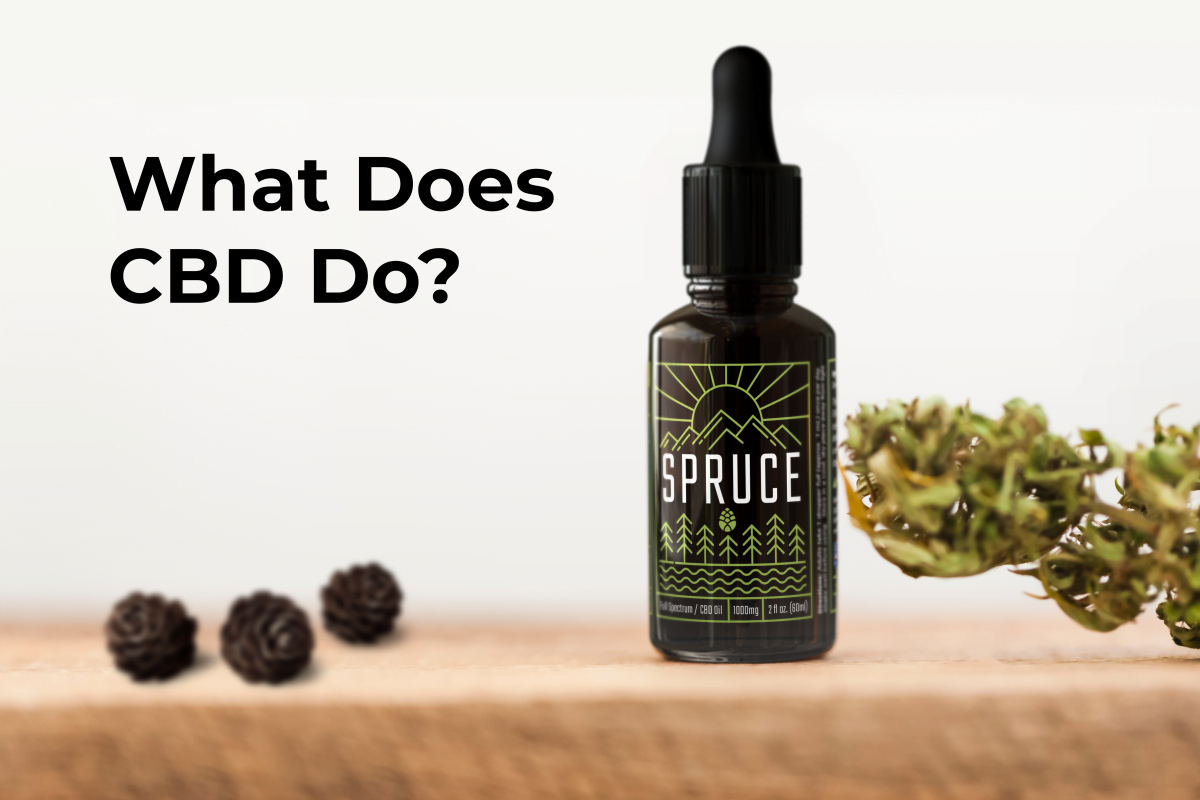What Does CBD Do?

CBD stands for cannabidiol and is a chemical compound found within the hemp plant. Though some refer to hemp plants and marijuana plants interchangeably, science experts clarify that there is one notable difference between the two, and that is the amount of THC each type of plant contains.
THC is short for tetrahydrocannabinol and is the active ingredient that is responsible for creating the psychoactive effects most often associated with the use of recreational or medical marijuana.
Specifically, while the marijuana and hemp plants are the same with regard to visual appearance and smell, the hemp plant contains no more than 0.3 percent THC, whereas the marijuana plant’s THC content is much higher, usually falling somewhere between 5 and 20 percent. [5]
As a result, the side effects of CBD extracted from the hemp plant are non-intoxicating, making them unlike the effects typically received from cannabis products that can be purchased at the dispensary in areas where marijuana is currently both medically and recreationally legal, which includes states such as California and Colorado.
With that point clarified, it becomes much easier to understand that CBD is simply one of many cannabinoids found within the cannabis plant. But what are cannabinoids?
Cannabinoids are defined, in part, as “a type of chemical in marijuana that causes drug-like effects all through the body, including the central nervous system and the immune system.” [6] The way they work is by interacting with the body’s own endocannabinoid system via CBD receptors.
The University of California, Los Angeles (UCLA) explains that the goal of the human endocannabinoid system is to help the body maintain a certain level of homeostasis. Additionally, though we’re just now learning more about this particular system, it has actually been present for more than 500 million years and can be found in all vertebrates, which includes mammals, birds, reptiles, and more. [7]
In the human body specifically, cannabinoid receptors can be found not only in the central nervous system, but also in various organs, cells, blood vessels, and other soft tissues according to the UCLA.
To sum it up, CBD is a cannabinoid that works by interacting with the body’s own endocannabinoid system to maintain homeostasis on multiple levels related to total health and wellness.
Available in a variety of forms—which include CBD oils (which are sometimes called cannabis oils or hemp oil) and tinctures—both human studies and animal studies have confirmed that this particular cannabinoid has a positive effect.
[1] “Dietary Supplements: A Framework for Evaluating Safety.” NCBI Bookshelf. Accessed Jun 27, 2019. https://www.ncbi.nlm.nih.gov/books/NBK216048/
[2] “Dietary Supplements Market Size Analysis Report by Ingredient (Botanicals, Vitamins), By Form, By Application (Immunity, Cardiac Health), By End Use, By Distribution Channel, and Segment Forecasts, 2019-2025.” Grand View Research. May 2019. https://www.grandviewresearch.com/industry-analysis/dietary-supplements-market
[3] “Cannabidiol (CBD) Market to Reach USD 16.32 Billion By 2026.” GlobeNewswire: Reports and Data. May 06, 2019. https://www.globenewswire.com/news-release/2019/05/06/1817668/0/en/Cannabidiol-CBD-Market-To-Reach-USD-16-32-Billion-By-2026-Reports-And-Data.html
[4] Agriculture Improvement Act of 2018. House of Representatives. Dec 10, 2018. https://docs.house.gov/billsthisweek/20181210/CRPT-115hrpt1072.pdf
[5] Shipman, M. “Is Hemp the Same Thing as Marijuana?” Phys.org. Feb 15, 2019. https://phys.org/news/2019-02-hemp-marijuana.html
[6] “NCI Dictionary of Cancer Terms.” National Cancer Institute. Accessed Jun 27, 2019. https://www.cancer.gov/publications/dictionaries/cancer-terms/def/cannabinoid
[7] “Human Endocannabinoid System.” UCLA Health. Accessed Jun 27, 2019. https://www.uclahealth.org/cannabis/human-endocannabinoid-system
[8] Grinspoon, P. “Cannabidiol (CBD) – What We Know and What We Don’t.” Harvard Health Publishing: Harvard Medical School. Aug 24, 2018. https://www.health.harvard.edu/blog/cannabidiol-cbd-what-we-know-and-what-we-dont-2018082414476
[9] “FDA Approves First Drug Compromised of an Active Ingredient Derived from Marijuana to Treat Rare, Severe Forms of Epilepsy.” FDA.gov. Jun 26, 2018. https://www.fda.gov/news-events/press-announcements/fda-approves-first-drug-comprised-active-ingredient-derived-marijuana-treat-rare-severe-forms
[10] Shannon, S. et al. “Cannabidiol in Anxiety and Sleep: A Large Case Series.” The Permanente Journal. 2019; 23: 18-041. Doi: 10.7812/TPP/18-041. https://www.ncbi.nlm.nih.gov/pmc/articles/PMC6326553/
[11] Russo, E. “Cannabinoids in the Management of Difficult to Treat Pain.” Therapeutics and Clinical Risk Management. Feb 2008; 4(1): 245-259. https://www.ncbi.nlm.nih.gov/pmc/articles/PMC2503660/
[12] “Researching Marijuana for Therapeutic Purposes: The Potential Promise of Cannabidiol (CBD).” National Institute on Drug Abuse. Jul 20, 2015. https://www.drugabuse.gov/about-nida/noras-blog/2015/07/researching-marijuana-therapeutic-purposes-potential-promise-cannabidiol-cbd

Founded in 2018, Spruce produces American-made, premium-quality, highly potent
CBD products.
Spruce Natural Labs
1053 E. Whitaker Mill Rd.
Suite 115-H
Raleigh, NC 27604, USA


SHOP
PAGES
CONTACT US
© 2022, Spruce Natural Labs LLC.
This product is not for use by or sale to persons under the age of 18. This product should be used only as directed on the label. It should not be used if you are pregnant or nursing. Consult with a physician before use if you have a serious medical condition or use prescription medications. A Doctor's advice should be sought before using Spruce. All trademarks and copyrights are property of their respective owners and are not affiliated with nor do they endorse this product. These statements have not been evaluated by the FDA. This product is not intended to diagnose, treat, cure or prevent any disease. Individual results will vary. By using this site, you agree to follow the Privacy Policy and all Terms & Conditions printed on this site. Void Where Prohibited by Law.




